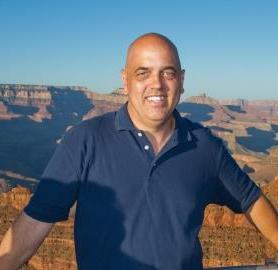With the famous solar eclipse approaching I’ve been looking forward to the celestial wonder since the 2017 Great American Eclipse. Though I have friends who travel the world to catch the next occultation, I try to make the most of the cards that Mother Nature deals me.Â
St. Louis Solar Eclipse at Sunset
I retired from the US Air Force on 30 Sep 2014. Three weeks later the St Louis area was to experience a partial solar eclipse at sunset. With just a little photography experience, I began planning my shot. Nothing says St Louis eclipse like having the Gateway Arch in it, but there was a challenge of how to compose both the St Louis Arch and the sun at the same time. I knew that if I stood on the east bank of the Mississippi River and used a wide-angle lens to capture the arch and skyline, I would render the sun (the image’s subject) a small dot. Well, that misses the point. I would need a long telephoto lens to frame the eclipsing sun in the same relative size as the arch.Â

Sure, using a telephoto lens solves one problem but finding a place to stand became the next. I knew that I would have to stand somewhere along the azimuth of the setting sun, which on 21 Oct 2014 was 256 degrees. As I searched along the bearing of 076 degrees (180 degrees out from the sunset azimuth) it was difficult to find a tall platform to stand on. Fortunately, 600 years before an unknown people built the Cahokia Mounds. At 100ft high, it placed me higher than the trees and surrounding buildings. Â

On the day of the eclipse, I was the first one there. Over the next hour, a few more people showed up where their activities gave this archaeological site a surreal feeling. Some small groups sat in a circle to offer chants in what I think were Native American tongues. A few rhythmically beat on drums while others sat in a circle of crystals. It was an ethereal experience!Â

Despite all the energy, most of this eclipse occurred under overcast skies. Still, I stuck with it. The image featured in this blog captures a two-minute window where the eclipsing sun peaked through a brief break in the clouds.Â

Solar Eclipse at Sunrise over Greene County Ohio
My second point about making the most of disappointing weather comes from a partial eclipse at sunrise which occurred in Greene County Ohio on 10 Jun 2021. Like the last eclipse, I understood the azimuth of the rising sun and sought a composition that might work. With an interesting road along farmland identified, I woke that pre-dawn morning under overcast skies. There wasn’t a star to be seen. A quick check of my weather sources didn’t dispel my concerns. In the end, I loaded my gear and drove out into the darkness as I was 100% certain, I would miss the eclipse if I sat on my thumbs.Â

As I made my way through the country roads, the early dawn light revealed some lightening patches of clear sky. The further I drove; my optimism grew as the clouds dissipated for the celestial event. The above image captures how the clouds continued to clear in the morning twilight. When I noted the rising sun and moon rising in Ohio skies, I was excited. Now my chore was to ensure the next dozen decisions didn’t ruin a good idea.Â
For me, it was a known race to capture the what I could of the eclipse, as the sun was pulling away from the moon. The eclipse was ending and would be completely over if the sun rose any higher. What I didn’t realize was my race would end earlier that anticipated.

Grateful to experience the eclipsing sun, I found the scene becoming rapidly obscured. Although the clouds that created the pre-dawn cloud ceiling has dissipated, a low lying cloud deck began to materialize. In fact, 30 minutes later, it was difficult to drive down the road due to the dense fog. Its difficult to assess all the factors, but during some eclipses, watchers experience an eclipse-induced fog. The explanation lies in with the the moon blocking the atmosphere’s heat source, the air begins to cool and condense.


